- Joined
- Feb 19, 2018
- Messages
- 660
Sorry i dont have the box. Please pm or email stangbladeworks @ gmail . com
Thanks again
Thanks again
The BladeForums.com 2024 Traditional Knife is available! Price is $250 ea (shipped within CONUS).
Order here: https://www.bladeforums.com/help/2024-traditional/
Yeah about 50V. I found it easier to just slowly ramp up until im happy. I didnt watch it too closely.Saw the vids & pics. Sah-weeeet! The color is awesome. Is it the gold/yellow around the 50v margin? You can return it to the return address on the box I shipped to you. If you don't still have it, I can PM the address.



I am pretty certain that this unit will be able to etch logos as well. If anyone is interested in that functionality please let me know and I will make a piece for it and test it out prior to posting the tutorial. Then this will cover anodizing carbidizing and logo etching with one unit that is far cheaper than any one of those separately.
Awesome. Im glad you are happy with it. Thanks for sending it in.Received the knife today. Function is twice as good & the lock stick is very minimal only when flicked very, very hard. The color is awesome. Pictures can not do it justice. The light reflects in certain areas & the color iridescence is great. From a dark banana yellow, to a goldish hue. Great job!
Now, it's time for me to do some stone washing!
Thanks. I will post my tutorial soon. Work has ramped up lately but i want to get it out asap for people to use. The etching portion will likely come later to avoid more delays. I also have a slipjoint tutorial on here i need to update. Lots of projects on the go. Hopefully i will get both up by early next week.Sounds pretty interesting. I look forward to whatever you end up posting. Thanks for sharing with us.
Jeremy
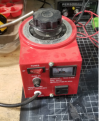
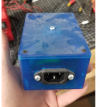
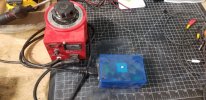
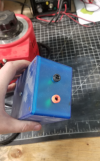
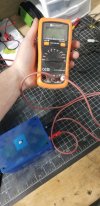

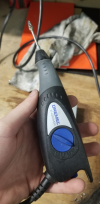
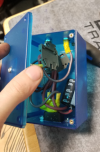
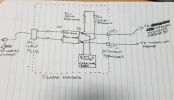
Negative to a titanium plate in your electrolyte and positive to the scale, clip etc. Start at 0v on the variac and slowly ramp up until you see a color you like. Its important to use multietch first and run it hot. I double boil it at about 180f or so. Hotter is better at 140f it does nothing. The difference it makes is crazy.Thanks man! How do you use it to anodize also?
